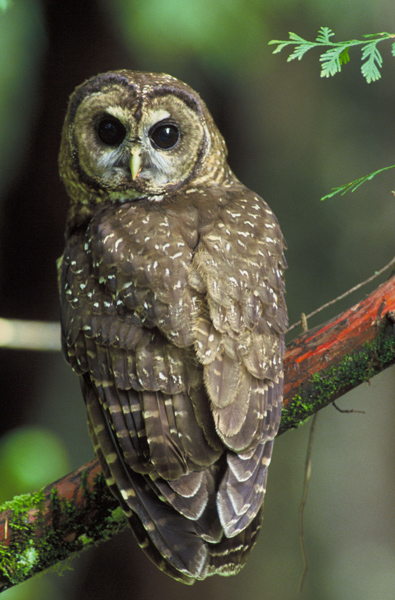|
Here are some suggested talking points. Personalize your response to give a maximum impact.
-
Please accept the following comment in response to the U.S. Fish and Wildlife Service’s proposed rule, Docket No. FWS-R1-ES-2020-0050, which seeks to revise designated critical habitat for the Northern Spotted Owl in western Oregon.
Before finalizing the rule, I urge you to consider and modify the rule to reflect the following points:
- You should prioritize protection of all current suitable habitat in the harvest land base before relying exclusively on the old forest reserves, because the reserves are not functioning yet. The forest reserves are still suffering from severe fragmentation that occurred before the spotted owl was added to the endangered species list. Until the reserves have recovered from past logging, conservation of the suitable spotted owl habitat in the Harvest Land Base remains critically important.
- The presence of barred owls makes the protection of old-growth forest habitat even more important. There are hundreds of thousands of acres of suitable spotted owl habitat that was assumed to be available to the spotted owl, but it's not available, because that habitat is occupied and defended by highly territorial barred owls. Every acre of owl habitat removed by logging under this proposal reduces the chances of co-existence and increases the chances of competitive exclusion.
- The 184,000 acres of Bureau of Land Management lands are extremely important for the survival of the spotted owl for two main reasons:
-There exists very little suitable habitat on non-federal lands. In fact, about 85 percent of remaining suitable spotted owl habitat can be found on federal lands.
- BLM lands provide essential habitat connectivity for owl populations moving between the Coast Range, Cascades, and Klamath/Siskiyou Mountains. Without this connectivity, it is highly likely to reduce the chances of spotted owls moving among these provinces, and preventing genetic isolation and degradation of the owl population.
- The economic value of healthy, intact public forests for clean water, climate stability, fish and wildlife habitat, recreation, fire resilience, and quality of life far exceeds the private value of logging and wood products.
|
204,653.
That’s the number of acres of public forest in Oregon that the Trump Administration is proposing to remove from the Northern Spotted Owl’s map of designated critical habitat. For an already fragile species (and ecosystem), the last thing the spotted owl needs is less protection and more logging. Please send a public comment to the U.S.Fish and Wildlife Service before October 13th, letting them know that their proposal is not only misguided, but harmful.
Since its federal endangered species listing in 1990, the spotted owl has become the poster child for old-growth forest protection in Oregon. The survival of the spotted owl is inextricably linked to the health and vitality of the forest. The dire condition of the spotted owl population indicates a serious problem in the dominant ecosystem in the Pacific Northwest. While its popularity has helped amplify the importance of safeguarding ancient forests, other factors, including continued habitat loss due to logging, competition with barred owls, fire and climate change, have kept this species on a path toward extinction.
Instead of eroding critical habitat protections in Western Oregon, the Trump Administration should be looking for ways to preserve every remaining old-growth tree, which is essential for the species’ survival, while also providing a wide variety of other public benefits.
“When we endanger the spotted owl we also endanger our communities, because spotted owl habitat also provides us with clean water, stable water flows, carbon storage and climate stability, habitat for fish & other wildlife, community fire resilience, recreation, scenery, and quality of life”, said Doug Heiken, Conservation and Restoration Coordinator.
Please click here to submit your individualized comment to the U.S. Fish and Wildlife Service.


